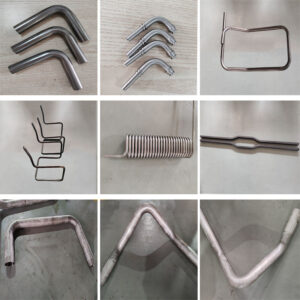Can You Use 90-Degree Bends on Plumbing Vent Pipes?
One common question among homeowners and plumbers alike is whether 90-degree bends can be used on plumbing vent pipes.
Understanding Vent Pipes
. Vent pipes are designed to:
- Allow Air Inflow: They ensure that air can enter the plumbing system, preventing the creation of vacuum pockets that can cause slow drains or water traps.
- Release Sewer Gases: By venting gases out of the system, they help maintain a healthy and odor-free indoor environment.
- Maintain Proper Pressure: Proper venting helps maintain the correct pressure within the plumbing system, ensuring smooth water flow.
The Role of Bends in Vent Pipes
Bends in vent pipes are necessary to navigate around obstacles and to fit the layout of a building. However, not all bends are created equal. The angle and frequency of bends can significantly impact the performance of the venting system.
- 90-Degree Bends: These are sharp turns that cause a significant change in the direction of the pipe. While they are sometimes necessary, they can create resistance and reduce the effective venting capacity.
- 45-Degree Bends: These are gentler curves that allow for smoother airflow and are generally preferred over 90-degree bends when possible.
Potential Issues with 90-Degree Bends
Using 90-degree bends in vent pipes can lead to several issues:
- Reduced Airflow: Sharp turns can create resistance, reducing the amount of air that can flow through the vent pipe. This can lead to inadequate venting and potential issues with water traps and drainage.
- Water Traps: In some cases, water can accumulate in the bend, creating a trap that prevents air from flowing freely. This can exacerbate venting problems and potentially lead to blockages.
- Noise: 90-degree bends can cause noise as air rushes through the sharp turn, leading to gurgling or whistling sounds in the plumbing system.
Best Practices for Using 90-Degree Bends
While 90-degree bends are not ideal, there are situations where they may be necessary. In such cases, it’s crucial to follow best practices to minimize potential issues:
- Minimize the Number of Bends: Use 90-degree bends sparingly and only when necessary. Opt for 45-degree bends or long sweeps whenever possible.
- Ensure Proper Slope: Maintain a consistent slope in the vent pipe to prevent water accumulation. A properly sloped pipe will help water drain away from the bend.
- Use Cleanouts: Install cleanouts near 90-degree bends to allow for easy access and maintenance. This can help prevent and address blockages.
- Consult Local Codes: Always consult local plumbing codes and regulations to ensure compliance. Some areas may have specific guidelines regarding the use of 90-degree bends in vent pipes.
Alternatives to 90-Degree Bends
When designing a plumbing system, consider alternatives to 90-degree bends to improve venting efficiency:
- 45-Degree Bends: Using two 45-degree bends in succession can achieve a 90-degree turn with less resistance and better airflow.
- Long Sweeps: These are gradual curves that allow for smooth airflow and minimize resistance. They are often used in larger vent pipes.
- Offsets: Creating offsets in the piping can help navigate around obstacles without the need for sharp bends.
Case Studies and Real-World Examples
To illustrate the points discussed, let’s look at a couple of real-world examples:
- Residential Plumbing: In a typical residential setting, a homeowner decided to use multiple 90-degree bends in the vent pipe to accommodate the layout of the house. Initially, the system seemed to work fine, but over time, the homeowner noticed slow drains and occasional gurgling noises. After consulting with a professional plumber, the homeowner replaced the 90-degree bends with 45-degree bends and long sweeps, resulting in improved drainage and no more noise issues.
- Commercial Building: In a commercial building, the original plumbing design included several 90-degree bends in the vent pipes. After years of use, the building experienced frequent drainage problems and unpleasant odors. A thorough inspection revealed that water had accumulated in the bends, creating traps and preventing proper venting. The building manager decided to redesign the venting system, using fewer and more gradual bends, which resolved the issues and improved overall plumbing performance.





